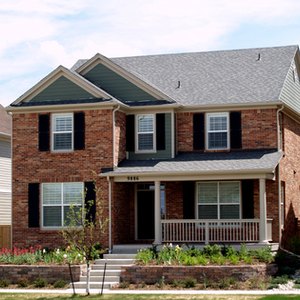
Whether you're a renter looking to purchase your first home, or a homeowner needing quick cash-in-hand, a cash-back mortgage might be the financial blessing you've been waiting for. Cash-back mortgages are loans that allow you to buy property without a down payment, or let you take out equity (accumulated value) out of your existing home in the form of cash.
Identification
Cash-back mortgages are property loans that give you an additional sum of money to use at your disposal when you finalize the purchase of your new home, or the repurchase of your existing home.
Types
Two types of cash-back mortgages exist. The first, also called a no-money-down loan, is designed for people with an acceptable credit rating who do not have the down payment to buy a home. In this type of cash-back mortgage, the bank “gives” you the percentage of the home's value that you need to put down to secure the loan, currently 5 percent as of December 2010. For example, if your home is worth $250,000, your mortgage lender would give you $12,500 to enable you to purchase the home. Although this type of cash-back mortgage sounds like a gracious handout, it's really just the bank's way of “drafting” you into the mortgage cycle sooner rather than later, says Bankrate.com, and recouping its initial investment many times over the course of your home loan.
On the other hand, when you take out a cash-back mortgage refinance loan, you get the amount of equity that you have built up in your house in cash. For example, if your home is worth $400,000 and you only owe $250,000 on the house, you would get $150,000 dollars in cash from the bank when you refinanced your home for $400,000. However, you do not have to take out all of your home equity in cash when you make the loan, says the Quicken Loans official website. You can take out a partial cash-back mortgage refinance loan, if desired.
Benefits
First-time cash-back mortgages give you instant equity in your home, says Gillian Riley, Scotiabank's vice-president of mortgages, on Bankrate.com. They also get you out of the renting rut, adds Riley. Additionally, cash-back refinance mortgages allow you to pay for emergency home repairs, educational expenses or even a much-deserved vacation.
Drawbacks
You have to pay closing costs and other fees to take out a cash-back refinance mortgage. These fees are usually taken out of the funds you receive from the cash-back refinance mortgage loan, notes the Quicken Loans website.
You also have to pay higher insurance premiums when you opt for a cash-back mortgage loan. For example, as of December 2010, the first-time option's insurance rates are 3.25 percent, according to BankRate.com. Therefore, if you take out a $250,000 loan, you'd pay $8,125 in insurance premiums over the term of the loan.
References
Writer Bio
Based in Louisiana, Lynette Hingle has been a writer since 2007. She specializes in topics related to health, fitness and travel. Hingle holds a Bachelor of Arts in mass communication and journalism from Southeastern Louisiana University.

